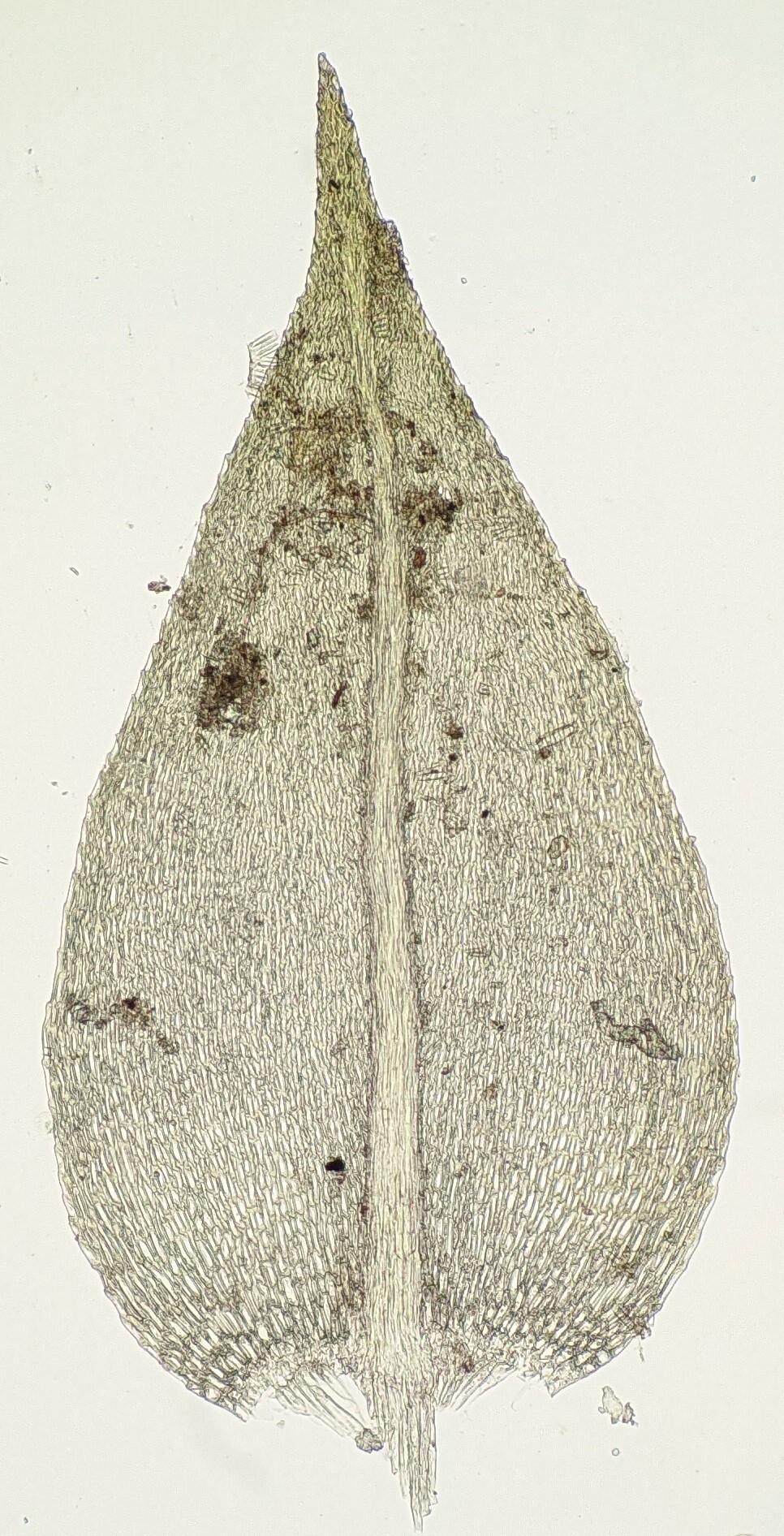Cratoneuropsis relaxa
(Hook.f. & Wilson) M.Fleisch. ex Broth.Dioicous. Dense mats on rocks, logs and soil. Stems 10 –15 (–25) cm long, procumbent to erect, irregularly to regularly pinnately branched, with fascicles of red-brown rhizoids arising below leaf insertions; paraphyllia abundant or sparse on stems and branches, filamentose or narrowly lanceolate. Leaves squarrose or widely spreading, unaltered or sometimes twisted when dry, lanceolate from cordate-ovate or ovate base, 0.7–1.8 mm long, 0.3–0.9 mm wide, concave to tubulose, often with a fold in acumen; apices acuminate, usually strongly reflexed, sometimes slightly oblique or straight; costae extending to mid-leaf to below the apex, percurrent or excurrent (not in Victoria); margins entire or denticulate, recurved at mid-leaf, without a border or border weak toward base (not in Victoria); laminal cells unistratose or rarely bistratose (not in Victoria), oblong-hexagonal or rhomboidal, (10–) 20–50 μm long, 4–9 μm wide, smooth or weakly prorate, becoming short-rectangular at base; alar cells poorly defined, subquadrate or elliptic, sometimes slightly inflated. Setae 1–5 cm long, red or reddish-brown, smooth. Capsules inclined or horizontal, oblong or short-cylindric, curved, 1.8–3.5 mm long. Opercula conic or conic-apiculate.
GleP, Brid, VVP, GipP, Gold, CVU, GGr, NIS, EGL, HSF, HNF, OtR, MonT, VAlp. Widespread along and south of the Great Dividing Range in or beside fast-flowing creeks or rivers and near waterfalls. Also SA, Qld, NSW, ACT and Tas. New Zealand, Macquarie Island and South Africa.
Variation in the size and branching of plants, how reflexed the leaf apices are, the strength and extent of the costae and whether the leaf margins are entire or denticulate have been used to recognise additional species in the past (Sainsbury 1955; Beever & Fife 2008; Fife 2014). The more distinctive forms are from submerged sites in New Zealand and have broadly ovate leaves with apices that are not reflexed or have leaves with stout excurrent costae that are predominantly bistratose and have been described as Sciaromium bellii and Hypnobartlettia fontana respectively (Beever & Fife 2008; Fife 2014). Variation in these features is largely influenced by environmental conditions and forms are not always distinct (Sainsbury 1955; Beever & Fife 2008; Fife 2014). Consequently, Cratoneuropsis is now widely considered as monotypic.
 Spinning
SpinningBeever, J.E.; Fife, A.J. (2008). Hypnobartlettia fontana is an environmental form of Cratoneuropsis relaxa (Bryophyta: Amblystegiaceae). New Zealand Journal of Botany 46: 341–345.
Fife, A.J. (2014). Amblystegiaceae, In Heenan, P.B., Breitwieser, I. & Wilton, A.D. Flora of New Zealand–Mosses. Fascicle 1. Manaaki Whenua Press, Lincoln.
Sainsbury, G.O.K. (1955). A handbook of the New Zealand mosses. Bulletin of the Royal Society of New Zealand 5: 1–490.

